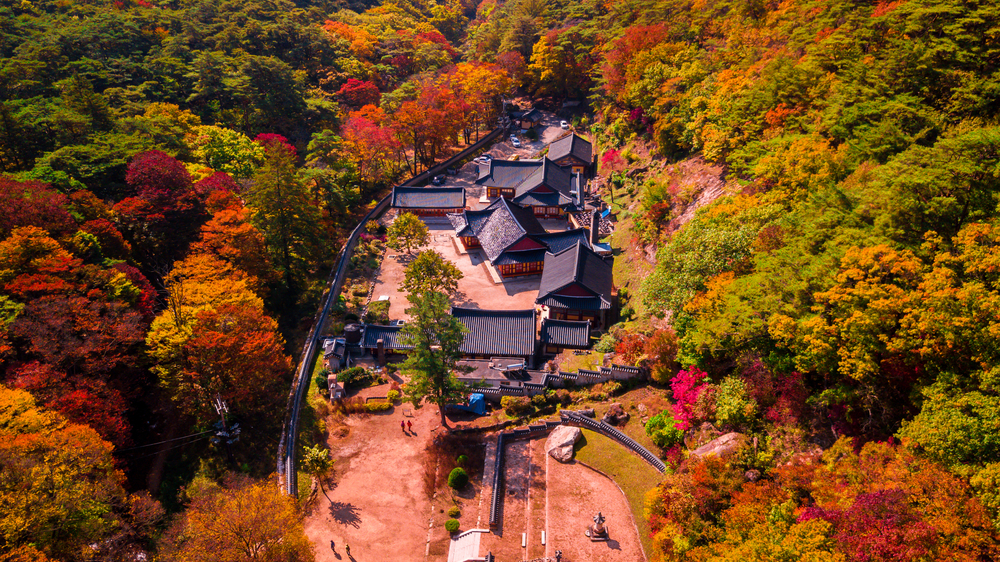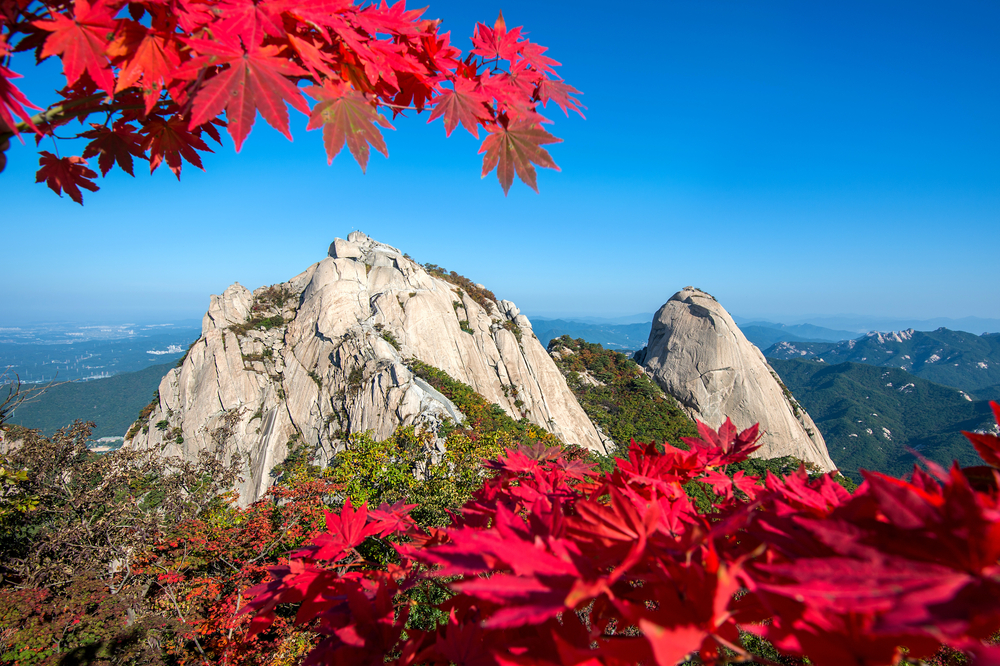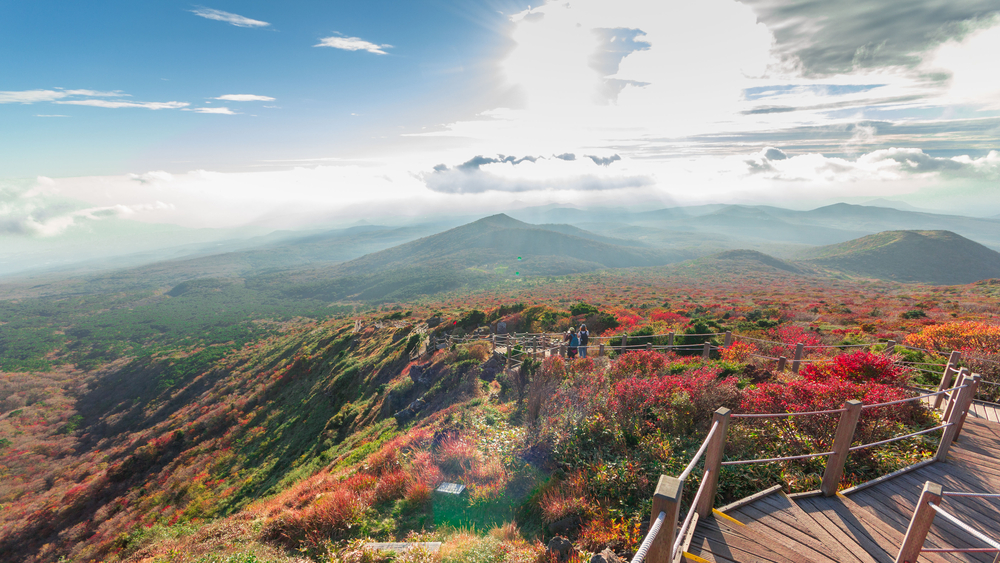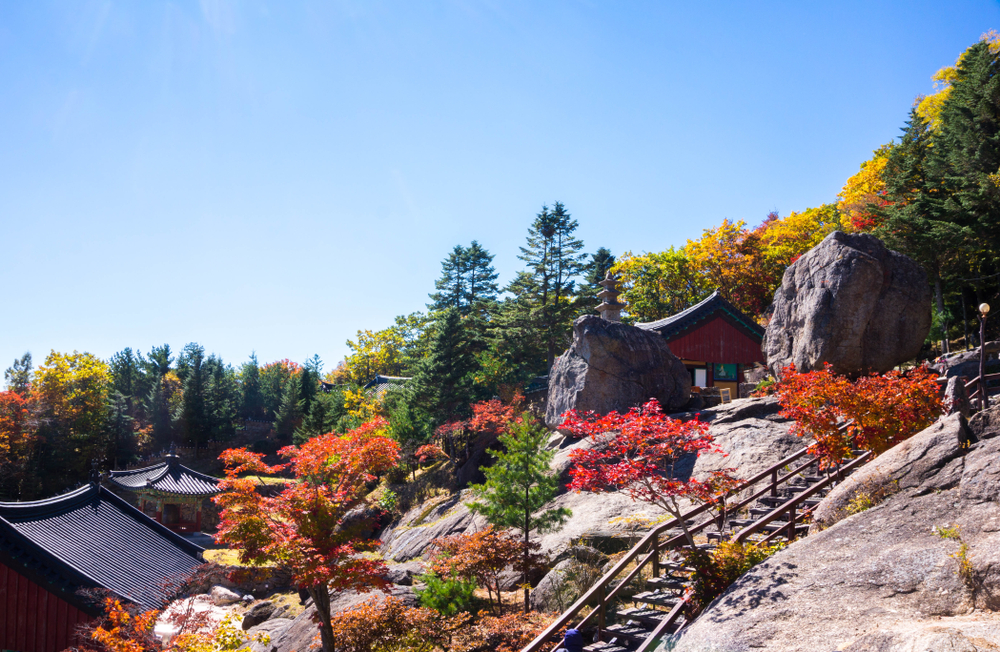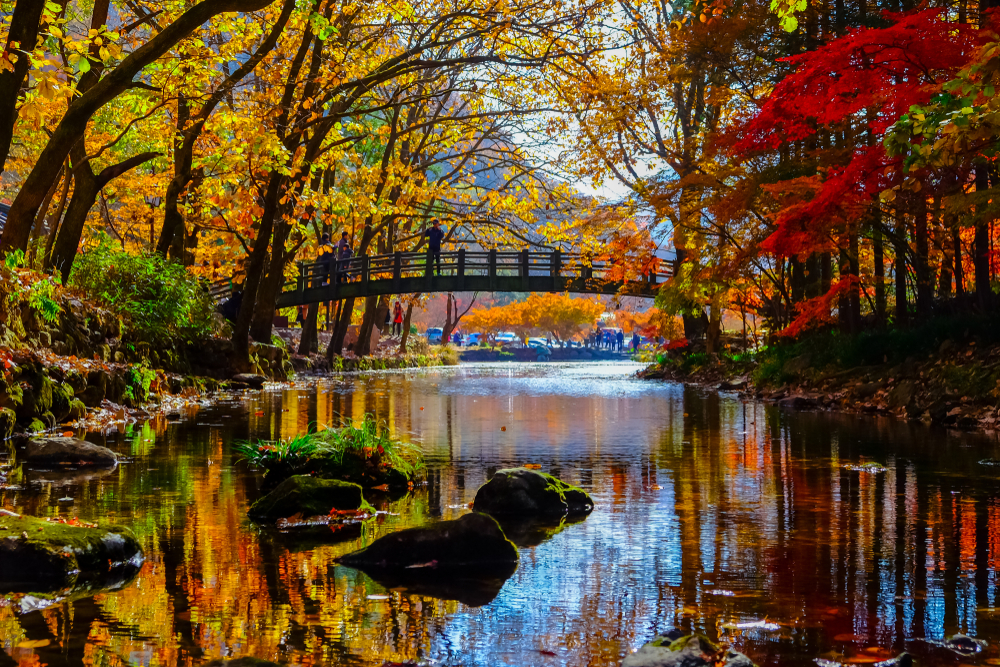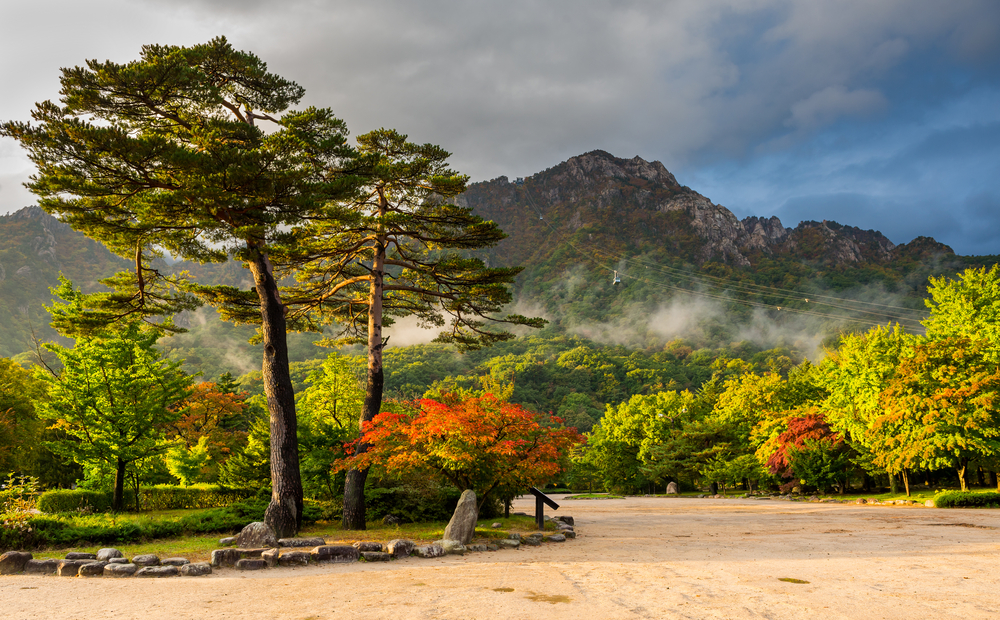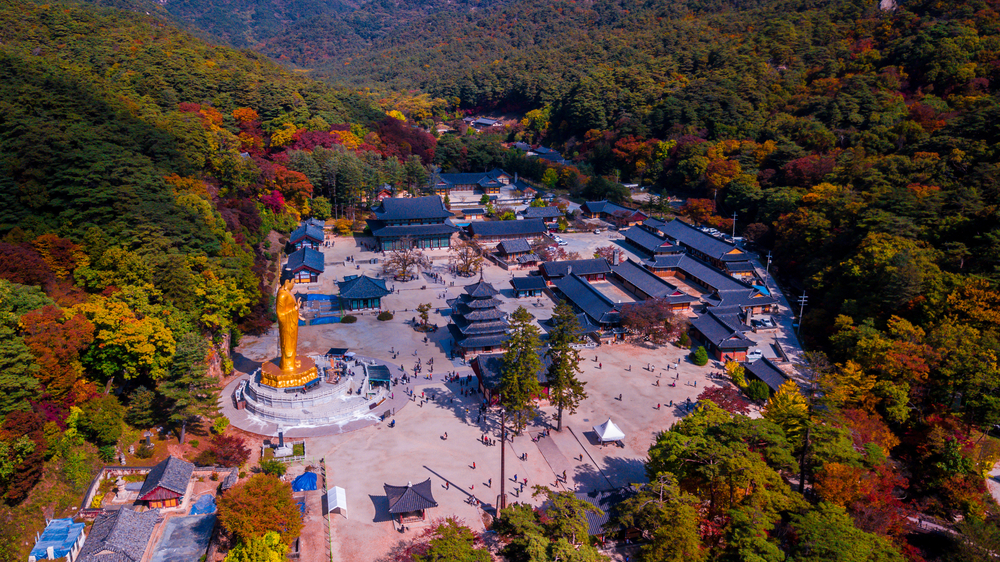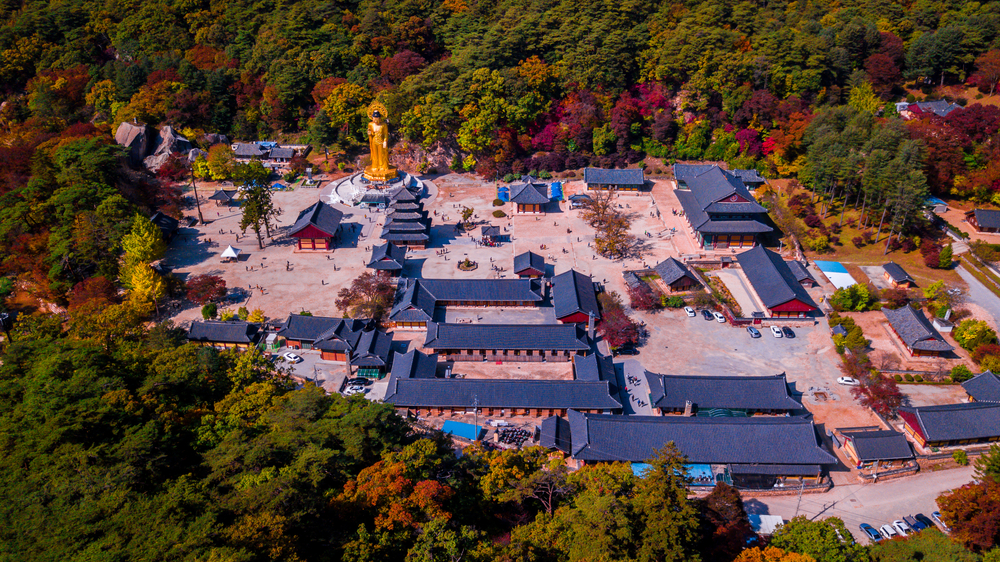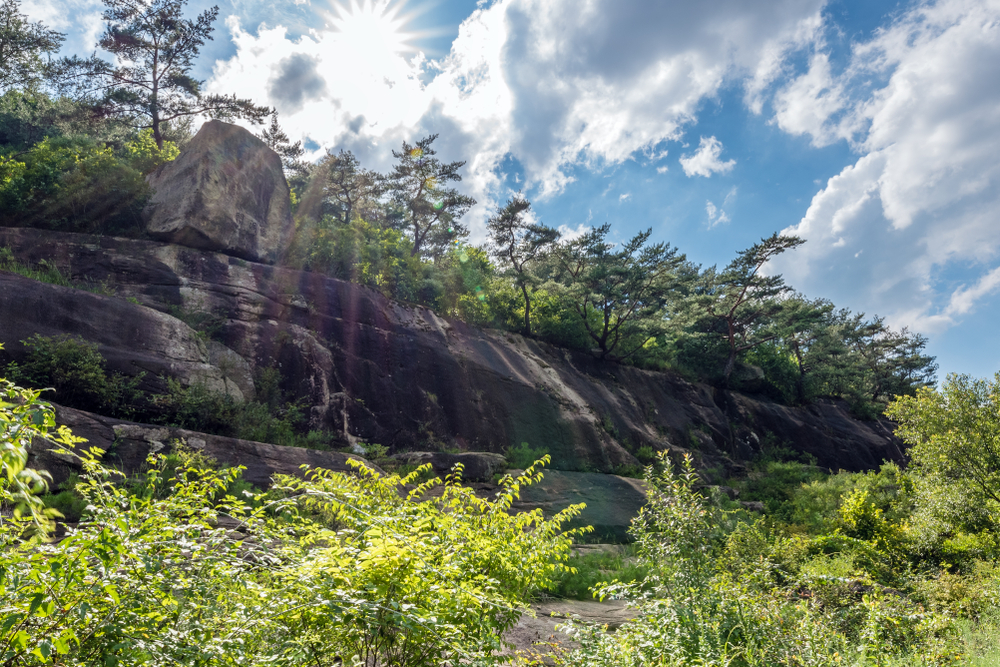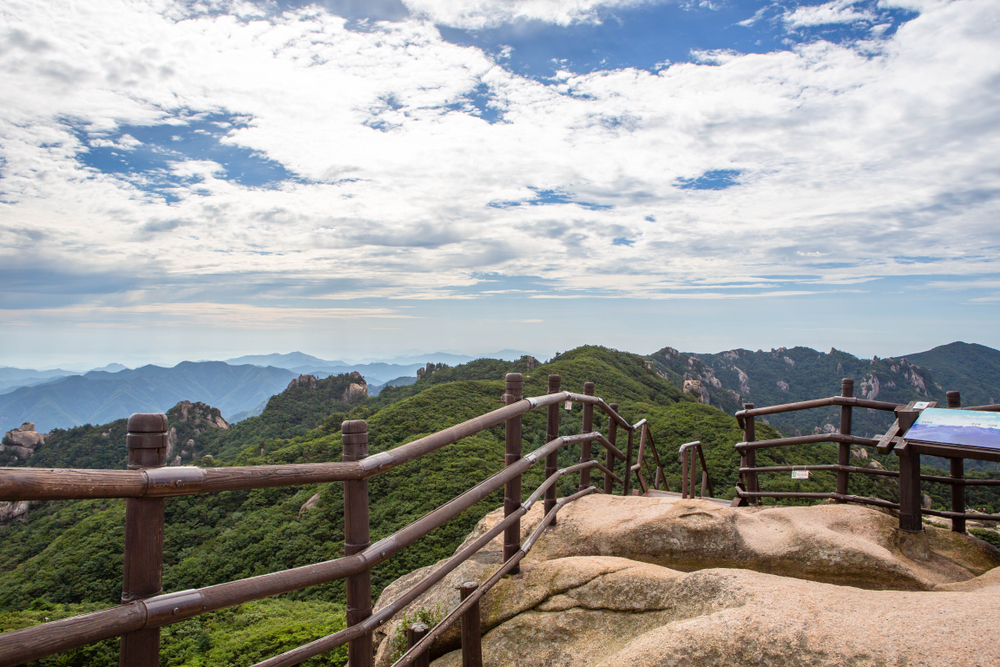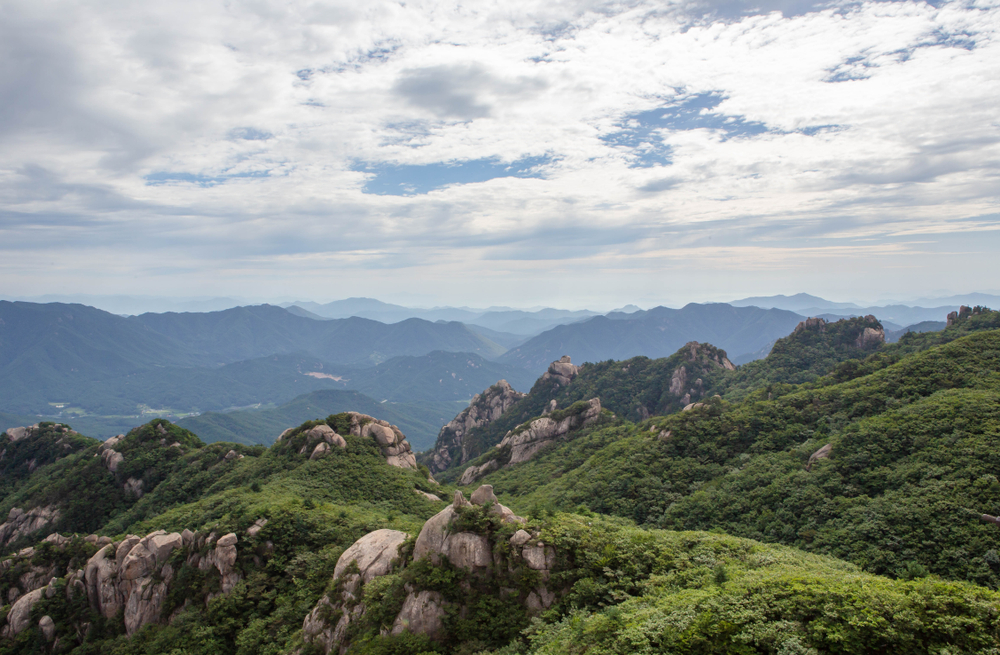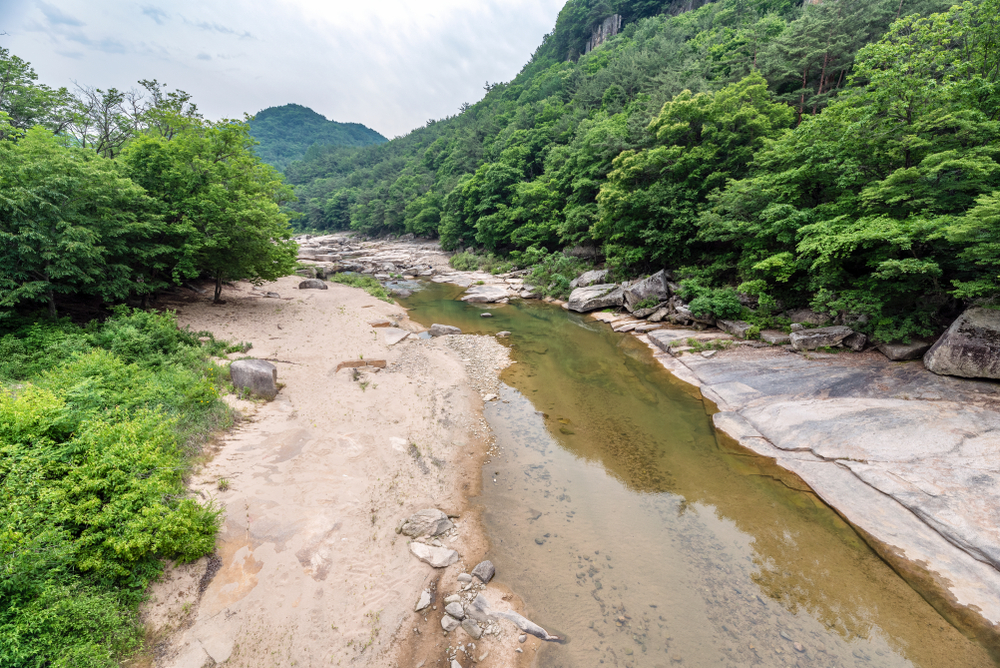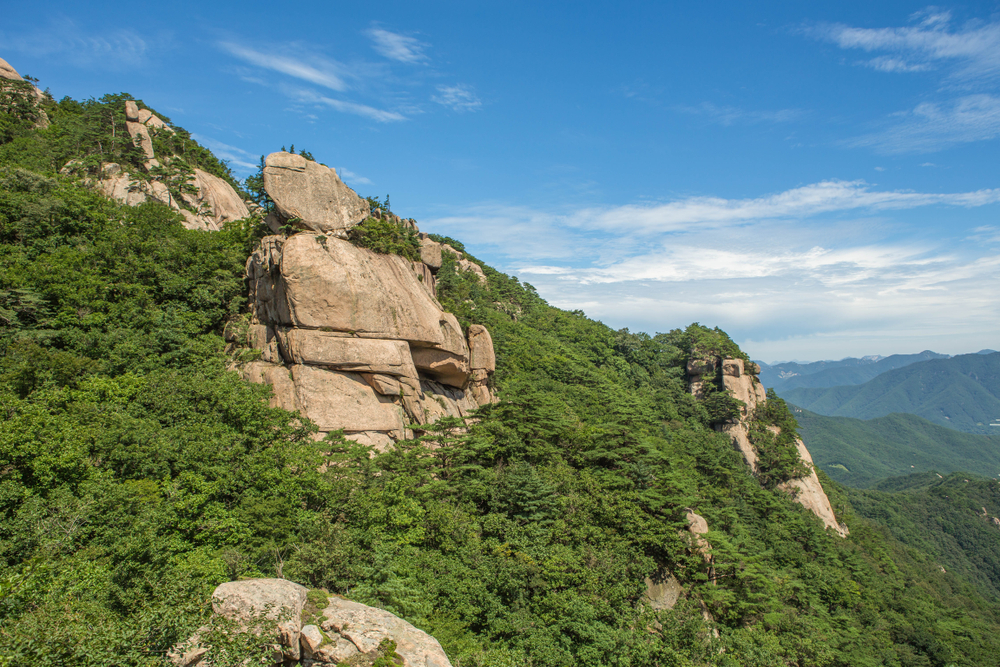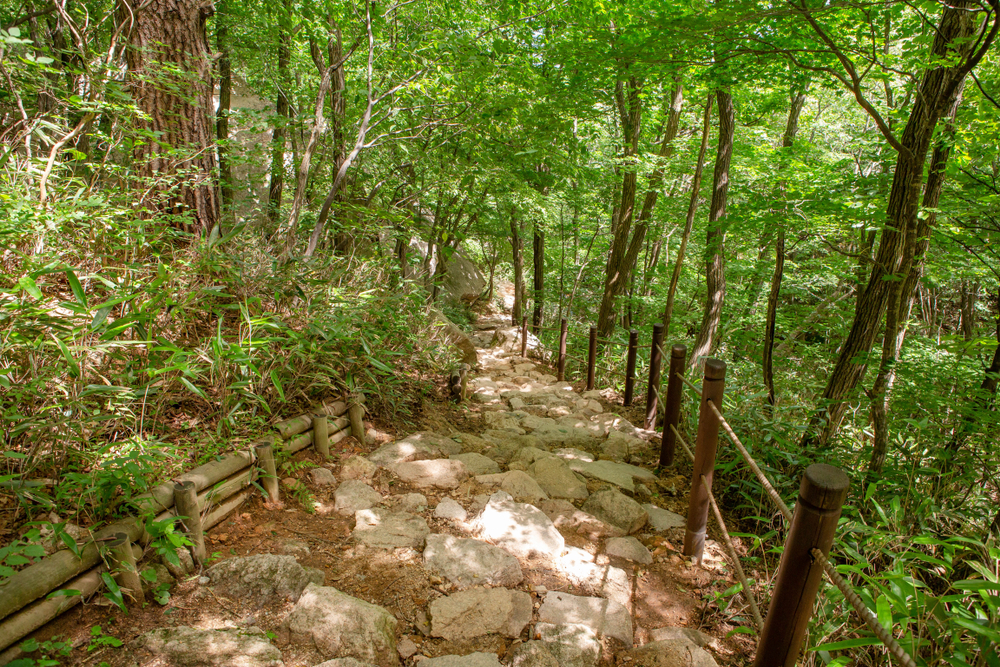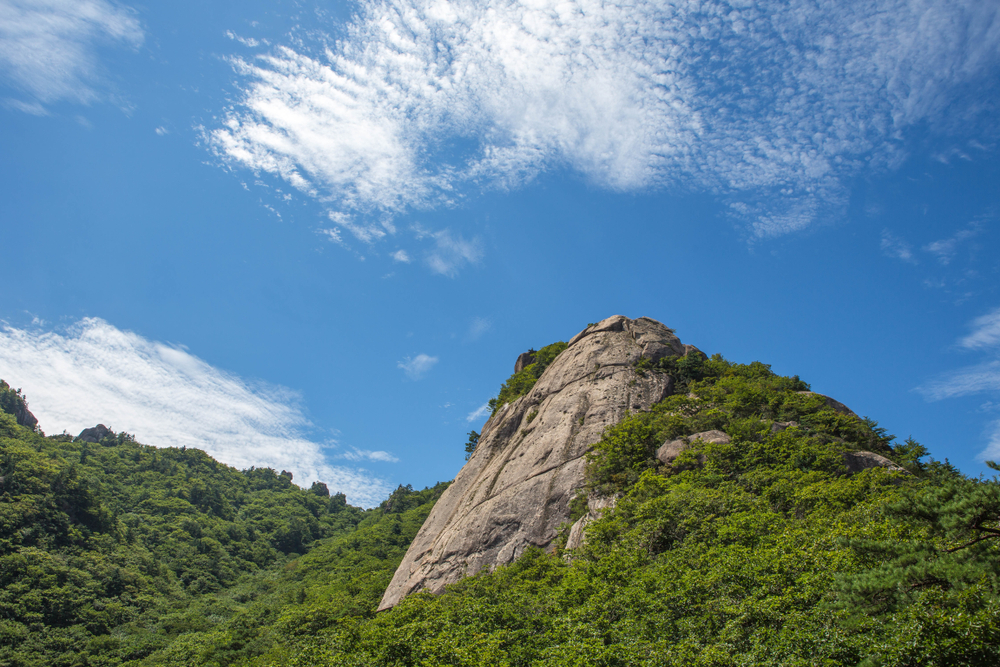Songnisan Overview
Songnisan National Park, established in 1970, is a majestic natural reserve located in the heart of South Korea. Spanning an area of approximately 274.54 square kilometers (about 106 square miles), the park straddles the borders of North Chungcheong and Gyeongsangbuk-do provinces. The name Songnisan translates to “Remote from the Mundane World Mountain,” aptly describing the park’s tranquil beauty and spiritual significance. The park is centered around Mount Songnisan, a mountain that rises to 1,058 meters (3,471 feet) and is revered for its natural beauty and cultural heritage.
Songnisan National Park is renowned for its lush forests, scenic valleys, and diverse wildlife. The park’s landscape is characterized by dramatic granite peaks, clear streams, and waterfalls, creating a picturesque setting that changes with the seasons. In spring, the park is adorned with cherry blossoms and azaleas, while autumn brings vibrant foliage, making it a popular destination for hikers and nature enthusiasts.
One of the park’s most notable cultural landmarks is the Beopjusa Temple, a historic Buddhist temple dating back to the 7th century. The temple complex, which includes the impressive five-story wooden pagoda and the giant bronze Buddha statue, is a testament to the region’s rich Buddhist tradition and adds a layer of cultural depth to the natural beauty of the park.
Songnisan National Park offers a variety of hiking trails that cater to all levels of hikers, from gentle walks to challenging treks to the summit of Mount Songnisan. Along these trails, visitors can explore the park’s diverse ecosystems, encounter wildlife, and enjoy panoramic views of the surrounding landscape.
With its combination of stunning natural beauty, rich biodiversity, and profound cultural heritage, Songnisan National Park is a cherished natural sanctuary. It provides a peaceful retreat for those seeking to escape the hustle and bustle of city life and immerse themselves in the serenity and majesty of South Korea’s natural landscape.
Park Map
Songnisan National Park Trails
Sources
- All Trails, Best Trails in Songnisan National Park, https://www.alltrails.com/parks/south-korea/chungcheongbuk-do/songnisan-national-park, retrieved April 2024.
- Imagine Your Korea, Songnisan National Park, https://english.visitkorea.or.kr/enu/ATR/SI_EN_3_1_1_1.jsp?cid=264126, retrieved April 2024.
- Korea National Park Service, Songinsan, https://english.knps.or.kr/Knp/Songnisan/Intro/Introduction.aspx?MenuNum=1&Submenu=Npp, retrieved April 2024.
- Korea T Track, Songinsan National Park, https://www.koreattrack.com/songnisan-national-park.html, retrieved April 2024.
- Korean Temple Guide, Beopjusa, https://koreantempleguide.com/beopjusa-temple-%EB%B2%95%EC%A3%BC%EC%82%AC-boeun-gun-chungcheongbuk-do/, retrieved April 2024.
- Peaks and Penguines, Songnisan, https://www.peaksandpenguins.com/koreas-national-parks/songnisan/, retrieved April 2024.








































































